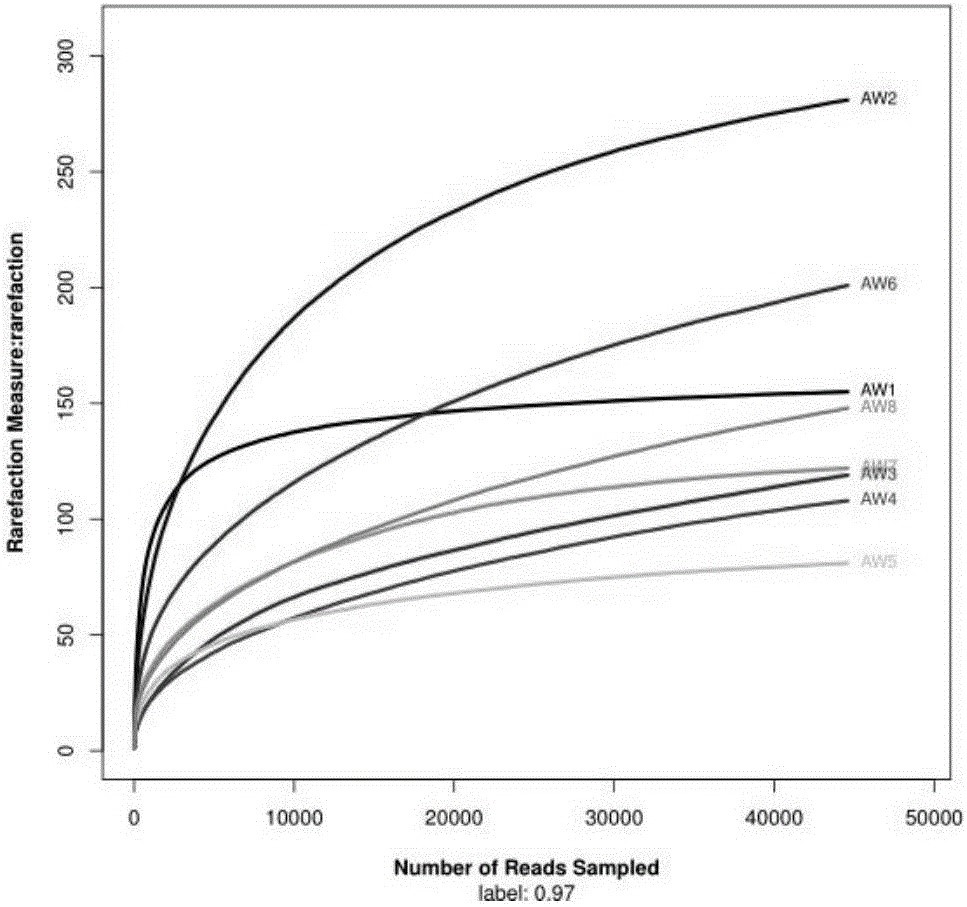
外文摘要:NOVELTY - Detecting wheat pathogenic microorganisms based on high-throughput sequencing technology comprises (i) extracting sample to be detected wheat or wheat genome DNA of sieve sample; (ii) amplifying the resulting genomic DNA by PCR using the universal primer of fungus internal transcribed spacer (ITS) region, (iii) using resulting PCR amplification product for high throughput sequencing; and (iv) clustering the high-throughput sequencing results based on similarity of not less than 97% and analyzing pathogenic microbial community of wheat samples or wheat sowing samples based on obtained classifying unit.
USE - The method is useful for detecting in-situ wheat sample testing (claimed).
ADVANTAGE - The method can lays the foundation for evaluating harmfulness and risk, especially suitable for Dacus inspection and quarantine department, to break through or out of the corresponding technical barrier and ensure safe production and trade of wheat.
DETAILED DESCRIPTION - An INDEPENDENT CLAIM is also included for using high throughput sequencing techniques in the detection of wheat pathogenic microorganisms in Australia comprising using above mentioned wheat pathogenic microbiological method for the pathogen microbial community carried in Australian wheat or its sieves comprehensive analysis and testing.
主权项:一种基于高通量测序技术的小麦病原微生物检测方法,其特征在于:包括以下步骤, 1)提取待检小麦样品或小麦筛下物样品的基因组DNA; 2)采用真菌ITS区通用引物对步骤1)的基因组DNA进行PCR扩增建库; 3)对步骤2)的PCR扩增产物进行高通量测序; 4)将高通量测序结果根据97%以上相似性进行聚类分析,根据获得的分类单元分析取 待检小麦样品或小麦筛下物样品的病原微生物群落。 2.根据权利要求1所述的小麦病原微生物检测方法,其特征在于:还包括将步骤4)分析 获得的所述病原微生物群落在目或属的分类水平上,将其分为优势类群、常见类群、次常见 类群和稀有类群四大类; 所述优势类群为比例大于或等于总病原微生物群落10%的真菌群落; 所述常见类群为比例大于或等于总病原微生物群落1%,并小于10%的真菌群落; 所述次常见类群为比例大于或等于总病原微生物群落0.5%,并小于1%的真菌群落; 所述稀有类群为比例小于总病原微生物群落0.5%的真菌群落。 3.根据权利要求1或2所述的小麦病原微生物检测方法在进境小麦样品检测中的应用。 4.高通量测序技术在进境澳大利亚小麦病原微生物检测中的应用,包括采用权利要求 1或2所述的小麦病原微生物检测方法对进境澳大利亚小麦或其筛下物中所携带的病原微 生物群落进行全面分析和检测。
申请号:CN201611000084.4
公开/公告号:CN106636352A
申请日:2016-11-14
公开/公告日:2017-05-10
申请/专利权人:深圳出入境检验检疫局动植物检验检疫技术中心;深圳市检验检疫科学研究院
发明/设计人:程颖慧;王颖;史亚千;高瑞芳;汪莹
分类号:C12Q1/68;C12Q1/04;G06F19/20
主分类号:C12Q1/68
法律状态:实质审查
点击下载:基于高通量测序技术的小麦病原微生物检测方法及其应用
